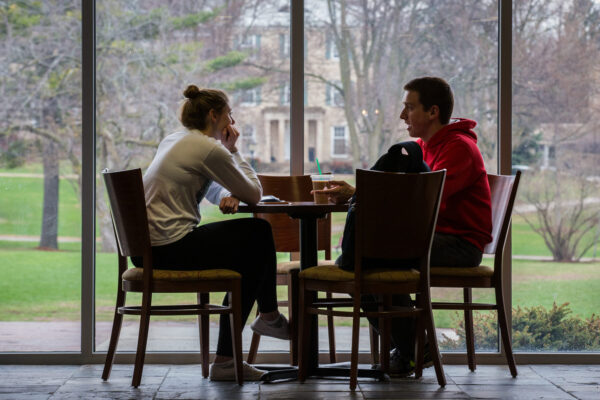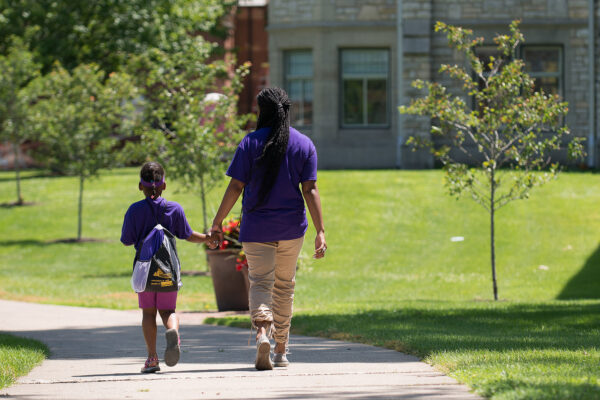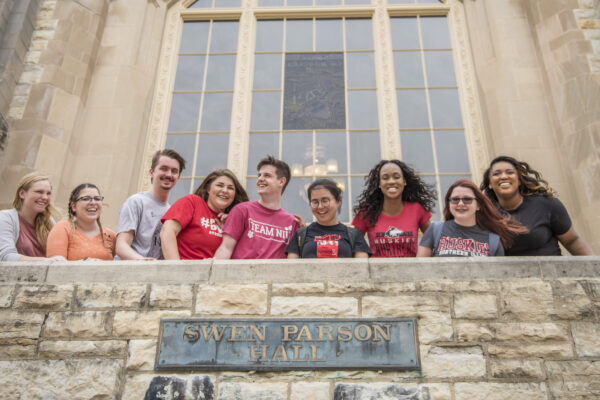Mary Ann Bodine Al-Sharif and Penny A. Pasque discuss the climate at U.S. colleges and universities for Muslim students, faculty and staff.
This is the latest post in a series sparked by recent student protests and the national dialogue on diversity and inclusion.
As a higher education administrator I (Mary Ann) interact with students, parents, faculty and staff on a daily basis. Recently, I was called to the front counter to help my staff, who had been working with a student and parent who were missing required documentation to complete college enrollment. My staff had explained the process for enrollment, but the parent wanted to move forward without tracking down the needed information.
I introduced myself, explained why the documentation was needed, and suggested that we move to my office where we could make a quick phone call to obtain the missing information and resolve the issue. At this point, the parent grabbed the student’s folder from my hand and, as they walked away from me, said, “It is people like you—who are not even human—that prevent my children from getting an education.”
I was stunned. Despite my years of experience in admissions, academic advising, and college access and equity, I was not prepared for those harsh words, which were witnessed by my staff and a full waiting room of students and parents. So who are “people like me?” In short, Muslim Americans.
Islam is the fastest growing religion both in the United States and in the world. Approximately 1.6 billion people are of Muslim faith, a full 23 percent of the global population. In fact, Muslims are expected to surpass the number of Christians by the end of this century. The majority of Muslims (62 percent) live in the Asia-Pacific region, including countries such as Indonesia, India, Pakistan, Bangladesh, Iran and Turkey. Within the United States, Muslims include 1.8 million adults and 2.75 million people of all ages.
Recent events lead to upsurge in Islamophobia
Muslim Americans and international Muslim students on campuses around the country experience blatant Islamophobia and microaggressions in many forms. Research shows microaggressions include stares in public, feelings of alienation and assumptions of religious homogeneity. Unfortunately, such experiences are often a reflection of the negative attitudes toward Muslims held by a significant portion of society.
The terror attacks in Paris, France on Nov. 13, 2015, the terrorist-inspired shootings in San Bernardino, California on Dec. 2, 2015, and the recent terror attacks in Brussels on March 22, along with a political climate that has promoted anti-Muslim rhetoric, has moved Islamophobia beyond microaggressions into overt acts of discrimination and violence against the Muslim community. These overt acts of discrimination and violence often turn into oppressive acts that take on a structural form that is often systematically reproduced through economic, political and cultural institutions (including colleges and universities) by the conscious and unconscious actions of many individuals who may or may not recognize their own acts of oppression (Young, 2004; 2013). (Also see Young’s Five Faces of Oppression.)
Where does this leave American Muslims who work, live and study on our campuses?
Islamophobia and the impact of daily oppression create a level of fear for Muslims and non-Muslims alike. For example, many Muslims in America face the fear of random, unprovoked acts of violence that are systematically occurring across the nation simply because of a religious affiliation. Even their own religious ideology and vocabulary has been stolen from their faith. For example, “jihad” refers to the constant effort or struggle that individual Muslims experience in living faithfully. It does not stand for “holy war,” but for a way of daily living, peaceful living—something not at all well represented in political speech or in popular media. We cannot forget that terrorists do not speak for Islam; terrorism is actually anti-Islamic behavior.
Such anti-Muslim rhetoric often translates into a damaging form of oppression felt by Muslim students, administrators and faculty. In particular, Muslim students may feel silenced and voiceless when it comes to addressing this fear for safety within their local communities. Fortunately, higher education leaders are in a powerful position to engage our campus and surrounding communities on ways to address both blatant Islamophobia and microaggressions.
How can academic institutions and higher education professionals address this culture of fear on college campuses?
To answer this question, we turn to scholars who have examined similar issues in the past, such as Freire, who noted that the only way to fight against a “culture of silence”—where those who are oppressed are so powerless that they cannot even speak of their own oppression—is to create a critical consciousness through education, literacy and self-reflection. By offering a safe space for education and campus activism where students from all walks of life have a voice, higher education takes on the important role of creating a needed critical consciousness in an educational environment.
What are some campuses doing to address Islamophobia?
On campuses across the nation, student activists have created demands outlining different ways that institutions and their leadership can create racially inclusive environments on campuses, including an end to Islamophobia (see What are Students Demanding?)
A number of institutional initiatives that seek to create safer and more inclusive climates for the Muslim community are gaining traction:
- The Muslim Student Association in the United States and Canada, which was launched in 1963 and has expanded to over 600 chapters, continues to engage students through annual conferences and ongoing campus programs. MSAs offer Muslim and non-Muslims students a safe space to engage in conversations about Islam, prayer, halal dining, and inclusion on campus.
- Lake Forest College provided a forum called Soup and Stories: Is ISIS Islam? where prominent college leaders, professors and students discussed recent tragedies in France, Beirut and Syria and shared their personal narratives as Muslims and/or Muslim advocates in an effort to combat Islamophobia, xenophobia and ongoing violence against the Muslim community.
- Oklahoma City Community College offers a space for groups to gather for dialogue around “Coffee and Religion.” In addition, they invited academic experts to speak to students and members of the community on topics such as the unrest in Syria and to work with local religious leaders to offer an Inter-faith Forum.
- Southeast Missouri State University instituted “The Talking Booth” this past fall semester to provide opportunities for dialogue across racial, cultural, and religious divides. Booths were strategically placed on campus to allow those passing by to stop and ask questions of individuals representing a variety of differing identities. Participants included students, faculty and staff from across campus, resulting in an open dialogue about differences and similarities across race, religion, ethnicity and other aspects of identity.
- The University of Michigan, University of Oklahoma, Villanova University, University of Wisconsin, and numerous other institutions offer Intergroup Dialogue (IGD/IGR) courses and co-curricular opportunities to promote dialogue on crucial topics among students from all across campus. IGD/IGR provides a space for all students to engage in dialogue around topics such as social justice, equity/inequity, privilege, oppression, current events and much, much more.
The above examples reflect well how higher education administrators can directly address anti-Muslim attitudes and behaviors through actively creating safe spaces and educational opportunities. Senior administrators can further seek to counter anti-Islamic sentiments in conversations that take place “behind closed doors” with donors, alumni and governing bodies.
How else might administrators address Islamophobia and increase awareness?
In another tangible example, administrators at one of the Seven Sisters colleges worked with women Muslim students and the facilities staff to paint direction signs on buildings indicating which direction is north. This initiative not only helped Muslim students feel a part of the campus community and to know which direction to face for prayer, but it also was useful for parents and students new to campus as they struggled to find buildings for orientation, classes and various events and activities. It is much like “curb cuts,” the ramps mandated by the American With Disabilities Act to accommodate wheelchair users that also have proven beneficial to visually impaired pedestrians, cyclists and people pushing baby carriages. The Seven Sisters example also provides a starting point for campus dialogue on Islamic prayer.
To be sure, there is more to be done to address Islamophobia on college and university campuses. If, according to McArthur, the purpose of higher education is to prepare “students for work in ways that contribute to both their overall wellbeing and to a better and more just society for all,” then we must include the Muslim community and other marginalized groups in conversations about who “all” is on our college campuses. It is imperative that we educate and empower our students and campus community members, who are our greatest allies in the fight against Islamophobia.
References
Young, I. (2004). Five faces of oppression. In L. Heldke and P. O’Conner (Eds.), Oppression, privilege, & resistance: Theoretical perspectives on racism, sexism, and heterosexism (37-63). New York, NY: McGraw-Hill.
Young, I. (2013). Five faces of oppression. In M. Adams, W. J. Blumenfeld, C. Castañeda, H. W. Hackman, M. L. Peters, & X. Zúñiga (Eds.) Readings for diversity and social justice: An anthology on racism, antisemitism, sexism, heterosexism, ableism, and classism. (3rd ed., 35-45). New York, NY: Routledge.
For Further Reading
Freire, P. (1985). The politics of education: culture, power, and liberation. South Hadley, Mass., Bergin & Garvey.
Lippy, C. H. (2013). Christian nation or pluralistic culture. In M. Adams, W. J. Blumenfeld, C. Castañeda, H. W. Hackman, M. L. Peters, & X. Zúñiga (Eds.) Readings for diversity and social justice: An anthology on racism, antisemitism, sexism, heterosexism, ableism, and classism. (3rd ed., 237-242). New York, NY: Routledge.
Nadal, K. L. (2011). The Racial and Ethnic Microaggressions Scale (REMS): Construction, reliability, and validity. Journal of Counseling Psychology, 58, 470–480.
If you have any questions or comments about this blog post, please contact us.


